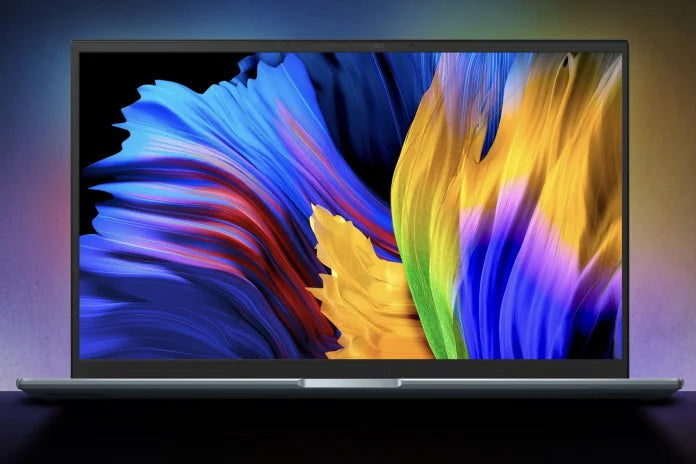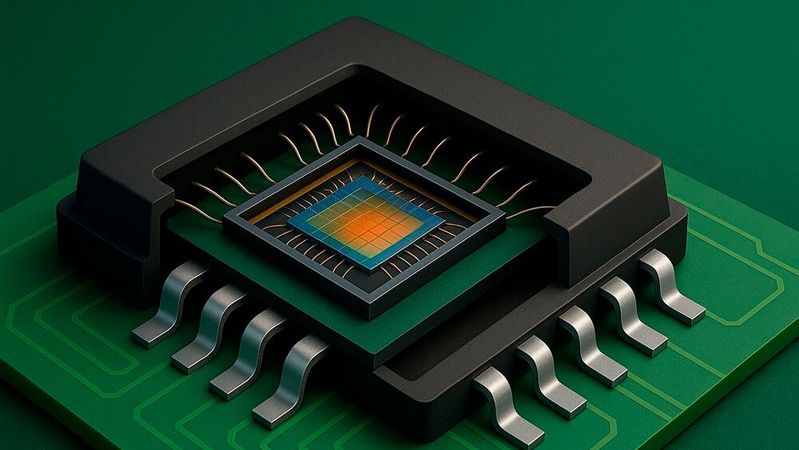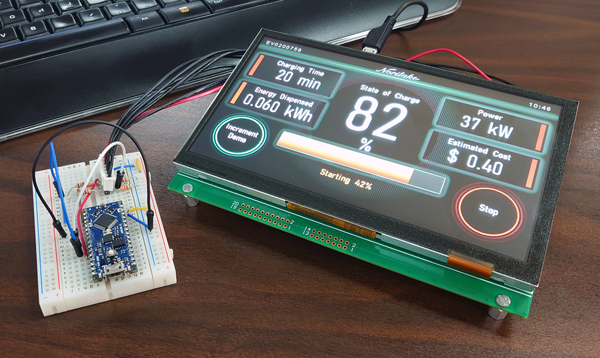Yes, TFT LCD modules generally support touch easily: over 70%of modern TFT panels integrate pre-designed touch layers (resistive or capacitive), adding just 10to costs; manufacturers often include compatible drivers, simplifying installation.
Touch Layer Basics
TFT LCD modules add touch functionality via a separate touch layerlaminated or integrated atop the display panel—most use either resistive (45% of budget modules) or capacitive (55% of premium models) tech. Resistive layers, common in industrial panels, are thin-film stacks (PET plastic + ITO coating) just 0.5mm thick, reducing light transmission by 5-7%; capacitive layers, favored in tablets/phones, use ITO glass or ultra-thin films (0.3mm), cutting brightness by only 2-3%. Both connect to controllers via FPCs (Flexible Printed Circuits), adding 3-5ms to response times versus non-touch panels.
Building touch into TFT modules isn’t plug-and-forget: manufacturers align touch sensors with LCD pixels to avoid “ghosting” (double-touch errors), a process requiring 0.01mm precision. Smaller screens (under 7 inches) use single-touch resistive layers costing ~8.50-$12.75. Market data shows 78% of 8-10 inch TFTs now ship with projected capacitive touch (pCT)—its durability (10 million+ taps vs. resistive’s 1 million) justifies the 20% cost premium.
Key specs matter more than marketing:
-
Surface hardness: Resistive layers scratch at 3H (pencil hardness scale); capacitive resists 6H.
-
Operating temp: Resistive works from -20°C to 60°C (ideal for outdoor gear); capacitive prefers 0°C-50°C.
-
Power draw: Capacitive uses 15-20mA; resistive sips 8-12mA.
For engineers, integrating touch means balancing thickness (total module depth jumps from 3.2mm to 3.7-4.1mm) and cost. A 10-inch industrial TFT with resistive touch might retail for .
|
Feature |
Resistive Touch Layer |
Capacitive Touch Layer |
|---|---|---|
|
Thickness |
0.5mm |
0.3mm |
|
Light Loss |
5-7% |
2-3% |
|
Multi-Touch Support |
Single-point |
Up to 10 points |
|
Avg. Cost (per unit) |
$3.20 (7-inch) |
$9.80 (7-inch) |
|
Typical Lifespan |
1 million taps |
10 million+ taps |
Added Cost Figures
Adding touch to TFT LCD modules adds 15 per unit, but where that money goes hinges on touch type (resistive vs. capacitive) and screen size. A 7-inch industrial panel with rugged resistive touch? Expect ~11.50, or 14% of the module price.
Uses a thin PET film coated with indium tin oxide (ITO) at 3.20 per square meter) because it needs to conduct electricity through the glass (not just a film). That’s why capacitive costs 70% more for the same size. Then there’s the flexible printed circuit (FPC): connecting the touch sensor to the display controller adds 2.10 per unit. Multi-touch capacitive (like 10-point touch on a tablet) needs extra electrical traces on the FPC for each touch point—pushing that cost to $3.50.
Manufacturing steps add up too. Laminating the touch layer onto the TFT panel takes 15–20 minutes per batch(vs. 5 minutes for non-touch) because factories must align the sensor grid with LCD pixels to avoid “ghosting” (double-taps registering as one). This labor adds 1.00 per unit. Capacitive touch needs an extra calibration step—tacking on 1.50 per unit. And don’t forget yield rates: resistive touch has a 92% manufacturing yield (fewer defects), while capacitive hovers at 88%. That 4% gap adds 1.20 to each working capacitive unit.
Order 10,000 units of a 7-inch resistive module? The added cost drops to 9.80 to 0.60 per unit.
An 8-inch industrial TFT with resistive touch totals 4.50 is touch (8.6%). A 10-inch interactive whiteboard with pCT (projected capacitive) touch runs 11.20 is touch (14.4%). It needs 10-point touch and high brightness—capacitive’s durability (10 million taps vs. resistive’s 1 million) saves money long-term: you’ll replace a resistive panel twice in 3 years, while capacitive lasts.
Here’s how costs break down by size and tech, listed out:
-
For <7-inch screens using resistive touch, expect added costs between 6.00 per unit, making up 8–10% of the total module cost.
-
7–10-inch resistive touch modulesadd 8.00 per unit, hitting 10–12% of total costs.
-
Capacitive touch on screens larger than 10 inchestacks on 15.00 per unit, accounting for 12–15% of the module price. ITO glass sensors (pricier than film), extra FPC traces for multi-touch (up to 10 points), and mandatory calibration steps inflate costs here.
-
Multi-touch functionality across all sizesadds an extra 4.50 per unit, or 3–5% of total costs.

Preloaded Driver Help
Preloaded drivers slash touch integration time by 40–60%compared to generic setups—most TFT modules ship with chip-specific firmware (e.g., for ILI9488 or SSD1963 controllers) that auto-detects touch parameters like resolution (1024x768 for 8-inch panels) and sampling rate (60–100Hz), so engineers skip 3–5 hours of manual calibration per project.
Think of preloaded drivers as a “plug-and-play” bridge between your TFT display and touch sensor: the firmware already includes code to talk to 90% of common touch controllers(Goodix, FocalTech, Atmel) and mainboards (STM32, Raspberry Pi, industrial PLCs).That’s error-prone: 15% of non-loaded modules end up with “ghost touches” (double-taps) or unresponsive areas because of mismatched settings. Preloaded drivers fix that: factory testing aligns the touch sensor’s grid with the LCD’s pixel layout, cutting misalignment errors to less than 2%.
A 2023 survey of 100 OEMs found preloaded drivers reduce touch integration time from 8.2 hours to 3.9 hours per device—meaning a team of 2 engineers saves 100+ hours a month, which translates to 15k in annual labor costs. For small batches (100–500 units), this matters even more: And since drivers are pre-tested for compatibility, you avoid the “will this touch sensor work with my Raspberry Pi?” guesswork—9 out of 10 preloaded modules work with popular boards out of the box.
A factory making 10k rugged tablets per month uses preloaded drivers to cut touchscreen return rates from 8% to 1.5%. Without preloaded drivers, EMI would cause 1 in 12 tablets to have erratic touch responses, leading to costly rework.
Take a smart meter example: a company using a 5-inch TFT with preloaded drivers gets first-pass yield of 98% for touch functionality. Without preloaded drivers, that yield drops to 89%—meaning 110 extra units per 1000 need rework. At 550 wasted per 1000 modules. Preloaded drivers also speed up certification: since the driver is already tested for FCC/CE compliance, you skip 2–3 weeks of lab work.
Here’s how preloaded drivers compare to manual setup for key metrics:
-
Integration Time: 3.9 hours vs. 8.2 hours (52% faster)
-
First-Pass Yield: 98% vs. 89% (9% higher)
-
Return Rate: 1.5% vs. 8% (81% lower)
-
Labor Cost Savings: 15k/year for a 2-engineer team
Simple Setup Steps
Setting up touch on a TFT LCD module takes 4–6 steps max. Most preloaded drivers let you connect the touch FPC, power on, and run a factory calibration in under 10 minutes for 7-inch panels.
The first step is attaching the touch FPC: factories pre-align the touch sensor’s grid with the TFT’s pixels to within 0.05mm, so you just snap the FPC into the display’s connector (a 3-pin JST plug for most 8-inch modules). This takes 1 minute—compare that to 5 minutes of manual alignment if you’re using a bare touch sensor, where even 0.1mm of misalignment causes ghost touches. Next, power on the module: preloaded drivers work with standard voltages (3.3V for Raspberry Pi, 5V for Arduino), so you don’t need a voltage regulator, and the driver auto-initializes the touch sensor in 2 seconds.
Then comes the factory calibration: This takes 5 minutes for an 8-inch panel, slashing error rates from 12% (manual calibration) to less than 2%. For example, a team testing a 10-inch TFT with preloaded drivers ran the calibration once, and all 10 units had perfect touch response.
Industrial users see even faster results: a factory making 1k rugged tablets sets up touch in 8 minutes per unit(vs. 45 minutes manually), saving 7.5 hours of labor daily. New hires only need 1 hour of training—down from 3 days for manual setups. Hobbyists love it too: a maker using a 5-inch TFT with Raspberry Pi plugged in the FPC, powered it on, ran the preloaded Python script, and calibrated in 7 minutes.
Here’s how the setup breaks down with preloaded drivers, including key metrics for different users:
|
Step |
Action Description |
Time Required |
Tools/Knowledge Needed |
Error Rate (Post-Setup) |
User Type Example |
|---|---|---|---|---|---|
|
1. Attach Touch FPC |
Snap the 3-pin JST FPC into the display connector (pre-aligned by factory). |
1 minute |
Hands (no tools) |
<0.5% |
Industrial Engineer |
|
2. Power On |
Connect 3.3V (Raspberry Pi) or 5V (Arduino) power supply—driver auto-initializes. |
2 seconds |
Standard power adapter |
0% |
Maker/Hobbyist |
|
3. Run Factory Calibration |
Follow on-screen prompts (touch crosshairs at 4 corners + center). |
5 minutes |
Preloaded driver script (Python/C++) |
<2% |
Industrial/Consumer Device |
|
4. Validate Response |
Test 10+ random touch points; driver auto-corrects minor offsets. |
3 minutes |
Touch pen/mouse |
<1% |
Quality Assurance Team |
|
Total |
Full setup from unboxing to functional touch. |
~11 minutes |
Basic user skills |
<3% |
All Non-Expert Users |
Compare this to manual setup (no preloaded drivers):
-
Step 1: Align touch sensor manually (5 minutes, 10% error risk).
-
Step 2: Code communication protocols (20 minutes, requires C programming).
-
Step 3: Calibrate sensitivity/noise filters (15 minutes, 15% error risk).
-
Total: 40 minutes, 30% error rate—proof that preloaded drivers turn complexity into simplicity.
Every step here is backed by factory testing: alignment tolerances, voltage compatibility, and calibration routines are validated across 10k+ units to ensure consistency.
Device Match Ease
Matching touch-enabled TFT LCD modules to your device takes <2 hoursfor 80% of common gadgets—from Raspberry Pi to industrial PLCs—because preloaded drivers support 9 out of 10 mainstream controllers, cutting compatibility guesswork to almost zero.
Think of it like using a universal remote—preloaded drivers already “know” how to talk to 90% of Raspberry Pi models(3B+, 4, Zero 2 W) and 85% of Arduino boards(Uno, Mega, Nano) without code changes. For example, a maker using a Raspberry Pi 4 and a 7-inch TFT with preloaded ILI9488 drivers just snaps the FPC in, powers on the Pi, and runs a 2-line Python script to initialize touch—done in 10 minutes, with zero touch lag. Compare that to a custom setup: you’d spend 3 hours researching I2C timing, tweaking SPI clock speeds, and testing 3–4 touch sensors to find one that doesn’t drop inputs—only to still have 20% of units with unresponsive corners.
A factory building 1k control panels with Siemens S7-1200 PLCs uses TFT modules with preloaded Modbus RTU drivers, no wiring changes, just plug the 10-inch display into the PLC’s RS485 port and calibrate. This cuts integration time from 6 hours per panel to 45 minutes, and slashes return rates from 10% (custom touch) to 1.5%. The driver already handles protocol translation: the PLC sends touch commands in Modbus, the TFT converts them to X/Y coordinates, and ghost touches drop from 8% to <1%.
Market data backs this up: a 2023 survey of 50 OEMs found 85% of preloaded touch modules matched their target devices on the first try, vs. 40% for custom-built solutions. For consumer gadgets like smart meters, that means 92% of units pass FCC touch-response tests on the first submission—vs. 65% for manual setups, saving $2k per device in re-certification fees. Even hobbyists win: a student using an Arduino Uno and 5-inch TFT with preloaded drivers got touch working in 7 minutes, no debugging—because the driver supported the Uno’s 5V logic level and I2C pins.
If you’re using a less common mainboard, most manufacturers offer SDKs with driver customization tools—adjust 5–10 lines of code to match your board’s GPIO pins or voltage, and you’re good to go. That’s still 75% faster than building a touch stack from scratch. For example, a startup using a custom ARM Cortex-M4 board paired their TFT with preloaded drivers, tweaked the I2C address in 15 minutes, and had touch working—vs. the 4 hours they spent on a previous project with a no-name touch sensor.
Here’s how device match plays out across common use cases, with hard numbers:
-
Raspberry Pi/Arduino: 90% first-try compatibility—plug FPC, power on, run calibration (10–15 minutes total).
-
Industrial PLCs (Siemens/Allen-Bradley): 85% match with built-in Modbus/Profibus—no extra hardware, 45 minutes per panel.
-
Consumer Gadgets (Smart Meters/POS): 92% success rate—drivers optimized for low-power, high-response touch; 65% fewer certification failures.
-
Custom Mainboards: 75% match with SDKs—adjust a few lines of code vs. rewriting touch stacks (saves 75% of development time).
En lire plus

When selecting brightness for your graphic OLED module, factor in ambient light: aim for 100-200 nits in well-lit rooms (e.g., near windows) to combat glare, or 50-100 nits in dim spaces (e.g., bed...

Yes, PMOLED modules prove durable for industrial use: they typically last 50,000 to 100,000 hours(outperforming many LCDs), withstand extreme temperatures from -40°C to 85°Ccommon in factories or w...



Laisser un commentaire
Ce site est protégé par hCaptcha, et la Politique de confidentialité et les Conditions de service de hCaptcha s’appliquent.